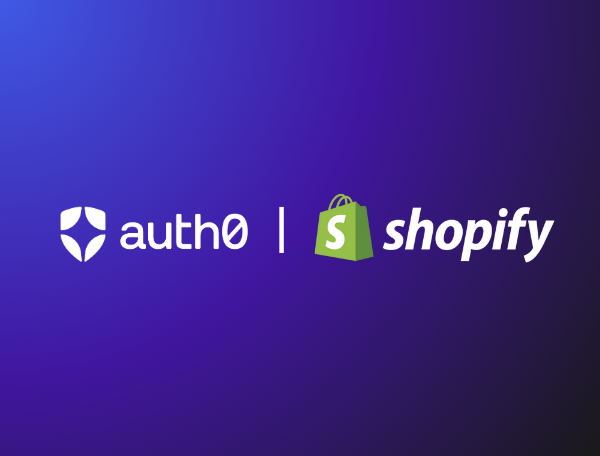While in college, I started an e-commerce business and needed a platform to manage my online store. Shopify was just emerging at the time, and it quickly became the go-to platform for beginners. Its intuitive interface and comprehensive features made it incredibly easy to launch products and scale quickly. However, despite its many advantages, one persistent challenge stood out: customer authentication.
Previously, Shopify lacked support for social or external login options, leading many customers to check out as guests. This made it challenging to offer subscriptions, monitor customer behavior, and cultivate stronger relationships. Key features like multifactor authentication (MFA) for fraud prevention and breach password protection were absent. Additionally, there was no straightforward method to customize the login user interface (UI), execute custom logic during authentication, or establish a centralized identity across various applications. Although Shopify provided a multipass login feature, it necessitated custom code and a more advanced grasp of Auth0.
That’s changed.
Shopify’s new identity provider integration
Shopify’s new customer accounts experience now allows merchants to integrate external identity providers using OpenID Connect (OIDC). This means you can bring your own authentication provider—like Auth0—to manage login, signup, passwordless options, MFA, and more, all while maintaining a unified user identity across applications.
Why use Auth0 as an Identity Provider?
Auth0 provides a flexible and powerful authentication platform with support for social logins, enterprise connections, MFA, custom branding, attack protection, and extensible workflows. By integrating Auth0 with Shopify, you gain complete control over the customer login experience—while improving security, personalization, and the ability to scale.
What this post covers
In this guide, I’ll walk you through how to:
- Set up an Auth0 application for Shopify
- Configure your Shopify store to connect to Auth0 using OpenID Connect (OIDC)
- Customize and test your authentication flow
- Troubleshoot common issues
- Understand the value of using Auth0 over the default Shopify login system
Prerequisites
- A Shopify Plus store or a Shopify Developer Account
- An Auth0 tenant with admin access
- Basic familiarity with OAuth 2.0 and OIDC concepts
Steps
Step 1: Enable new customer accounts in Shopify
In Shopify: Navigate to Settings > Customer Accounts. Next, navigate to Identity provider > Manage > Connect To Provider. Under Identity provider name, enter in "Auth0".
Under Provider, select Auth0.
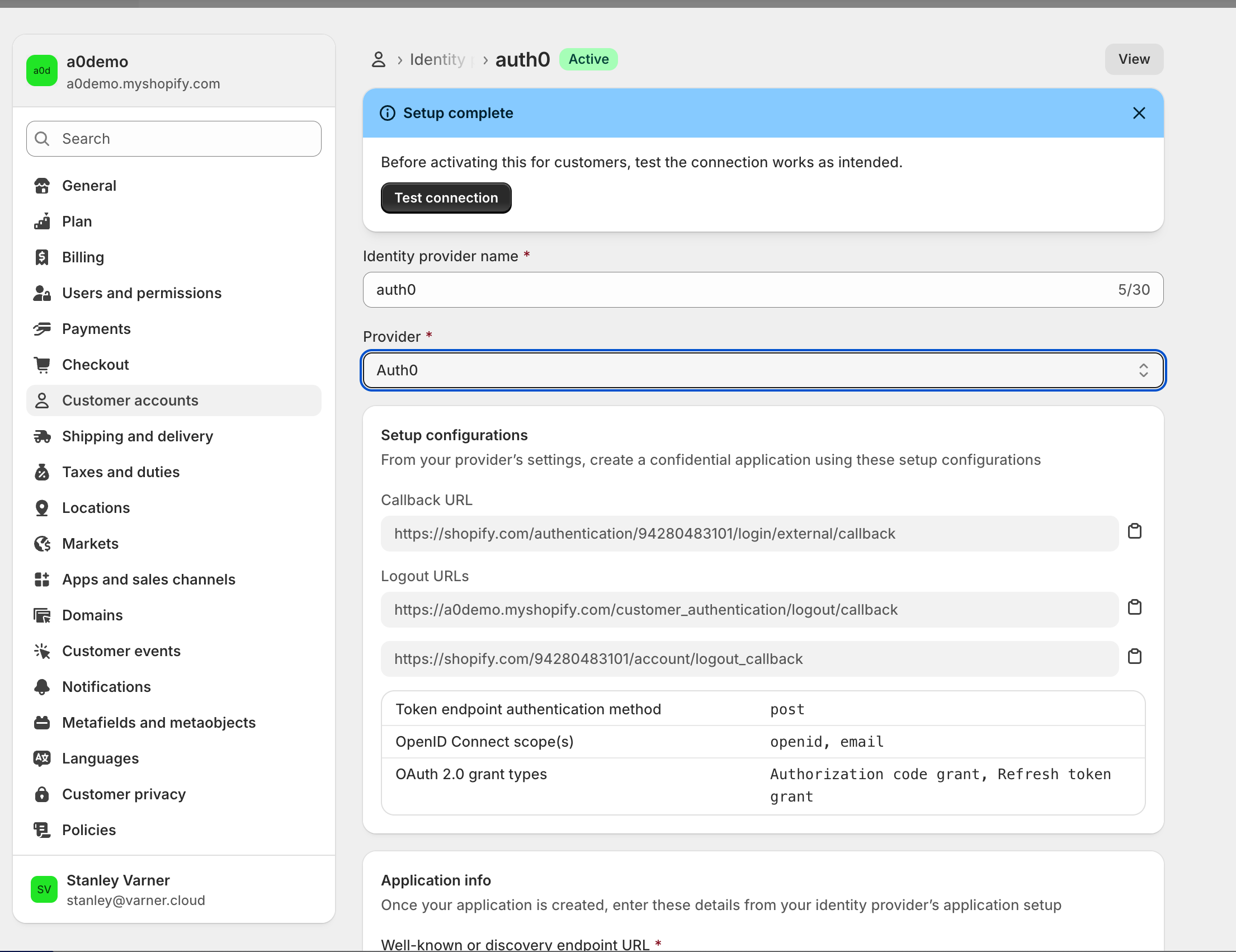
Once you select Auth0 as a provider, you will notice Setup configurations settings. These will be used in Auth0 shortly.
Step 2: Set up an application in Auth0
- Go to Auth0 dashboard > Applications > Create Application.
- Choose "Regular Web Application"
- Give it the name of “Shopify”
- Click Create
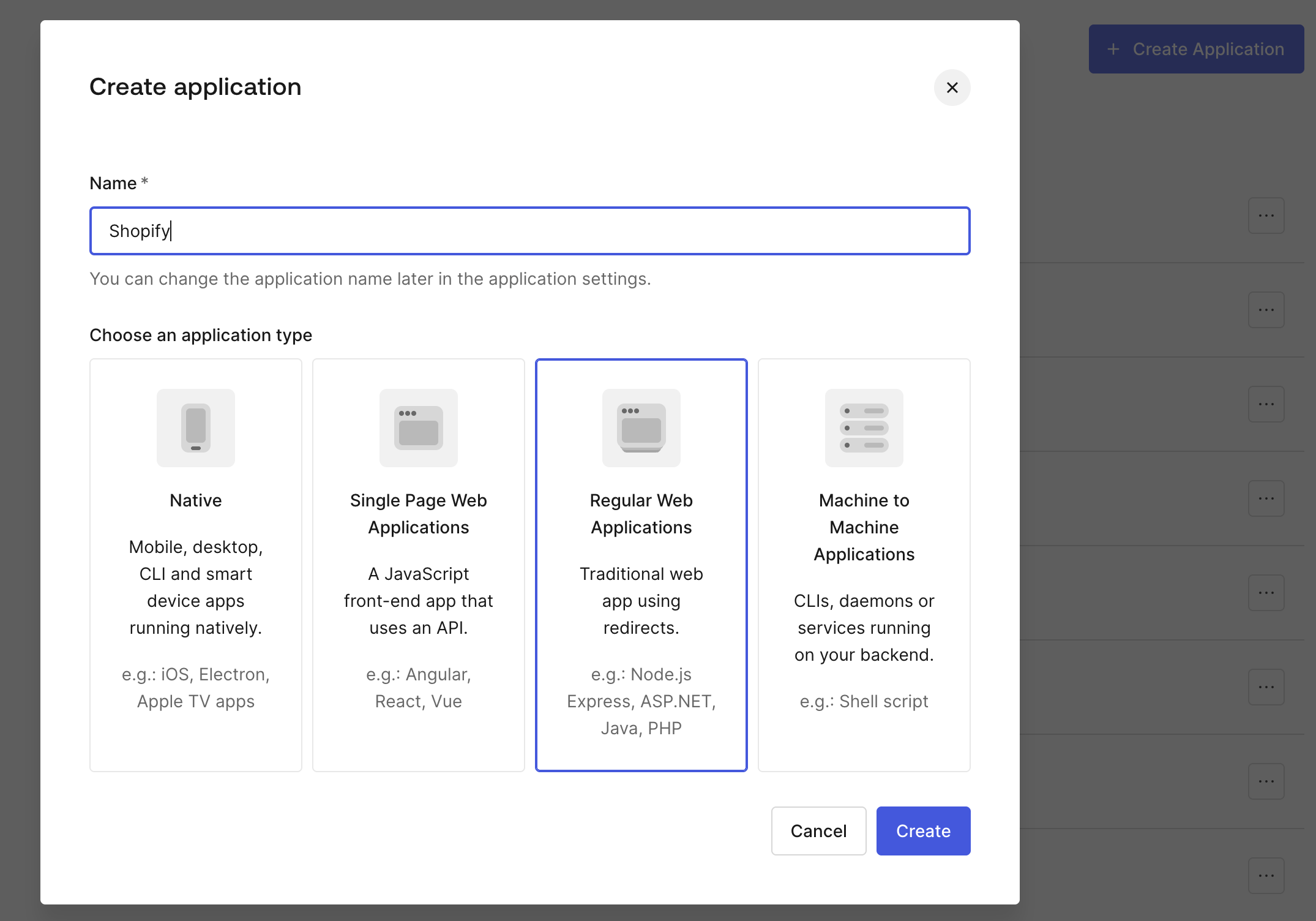
In Shopify, copy your Callback URL from the Setup configurations:
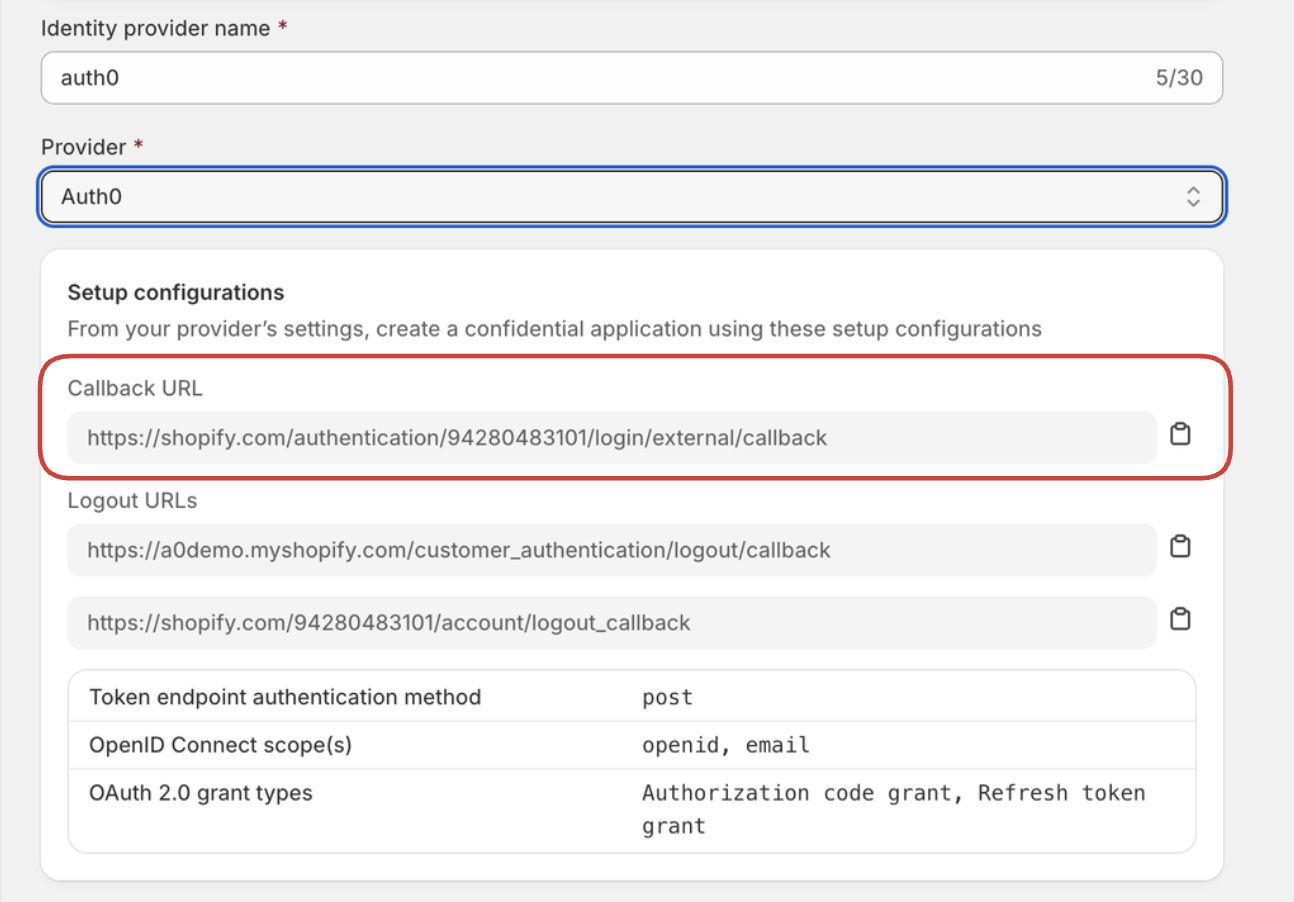
It will look like this URL:
https://shopify.com/authentication/<store_id>/login/external/callback
Back in Auth0: Scroll down to where you see Allowed Callback URLs and paste the Callback URL in the Allowed Callback URLs field:
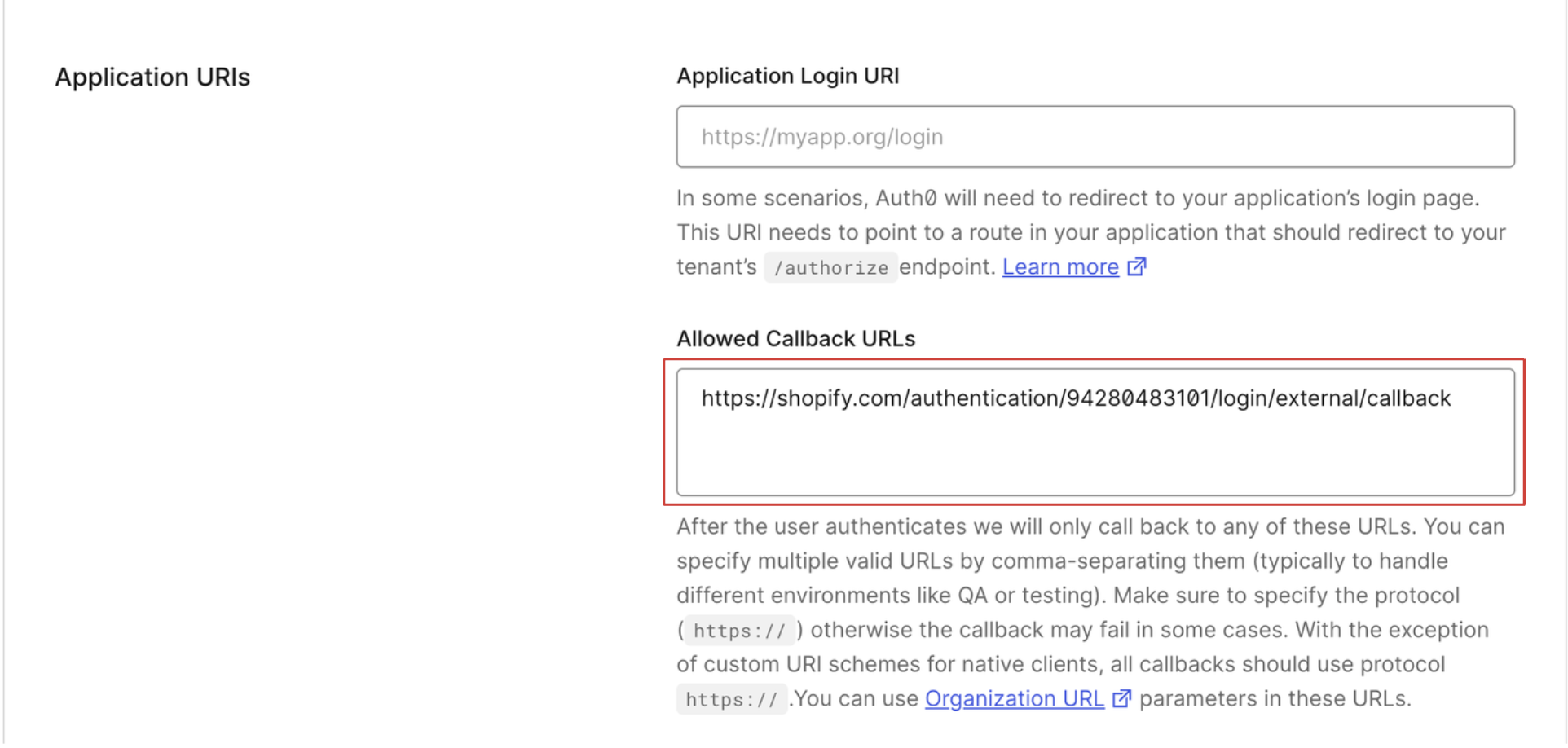
Do the same thing for your Shopify Logout URLs.
They will look like this:
https://<yourstore>.myshopify.com/customer_authentication/logout/callback https://shopify.com/<store_id>/account/logout_callback
Paste in the Allowed Logout URLs field:
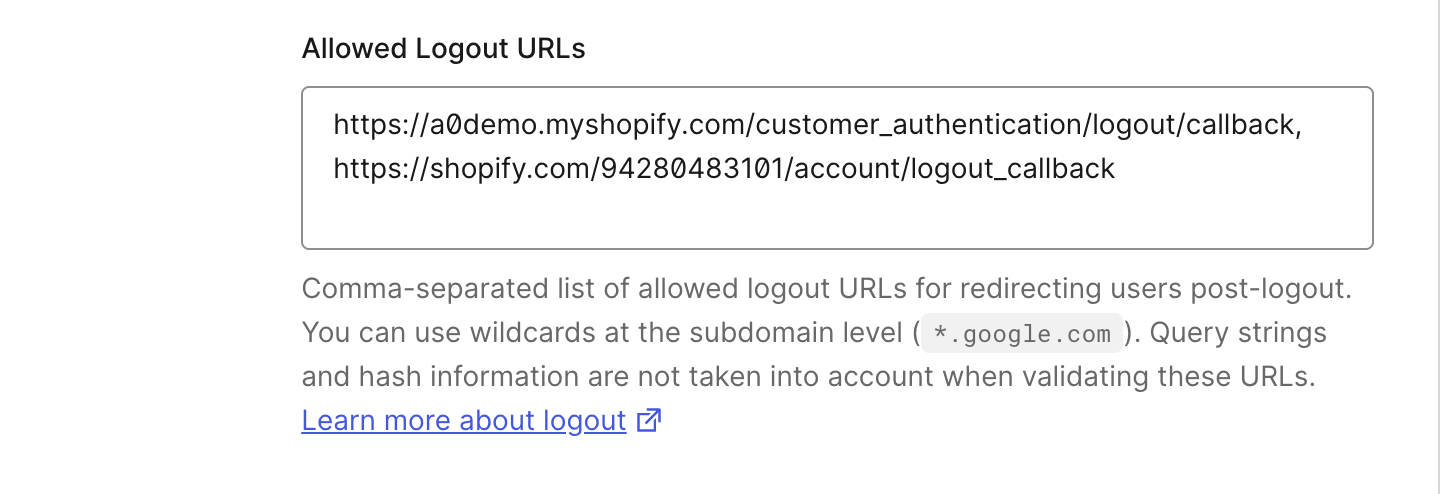
Click Save.
Step 3: Finalize the Identity Provider settings in Shopify using Auth0 info
In Auth0, scroll down to Advanced Settings and select the Endpoints tab. Copy the OpenID Configuration URL.

Go back to Shopify Admin > Settings > Customer Accounts > Identity Providers
Paste your OpenID Configuration URL into the Well-known or discovery endpoint URL field.
It will look like this:
https://<your-auth0-domain>/.well-known/openid-configuration

In Auth0: Scroll up to your Basic Information and copy your Client ID and Client Secret:
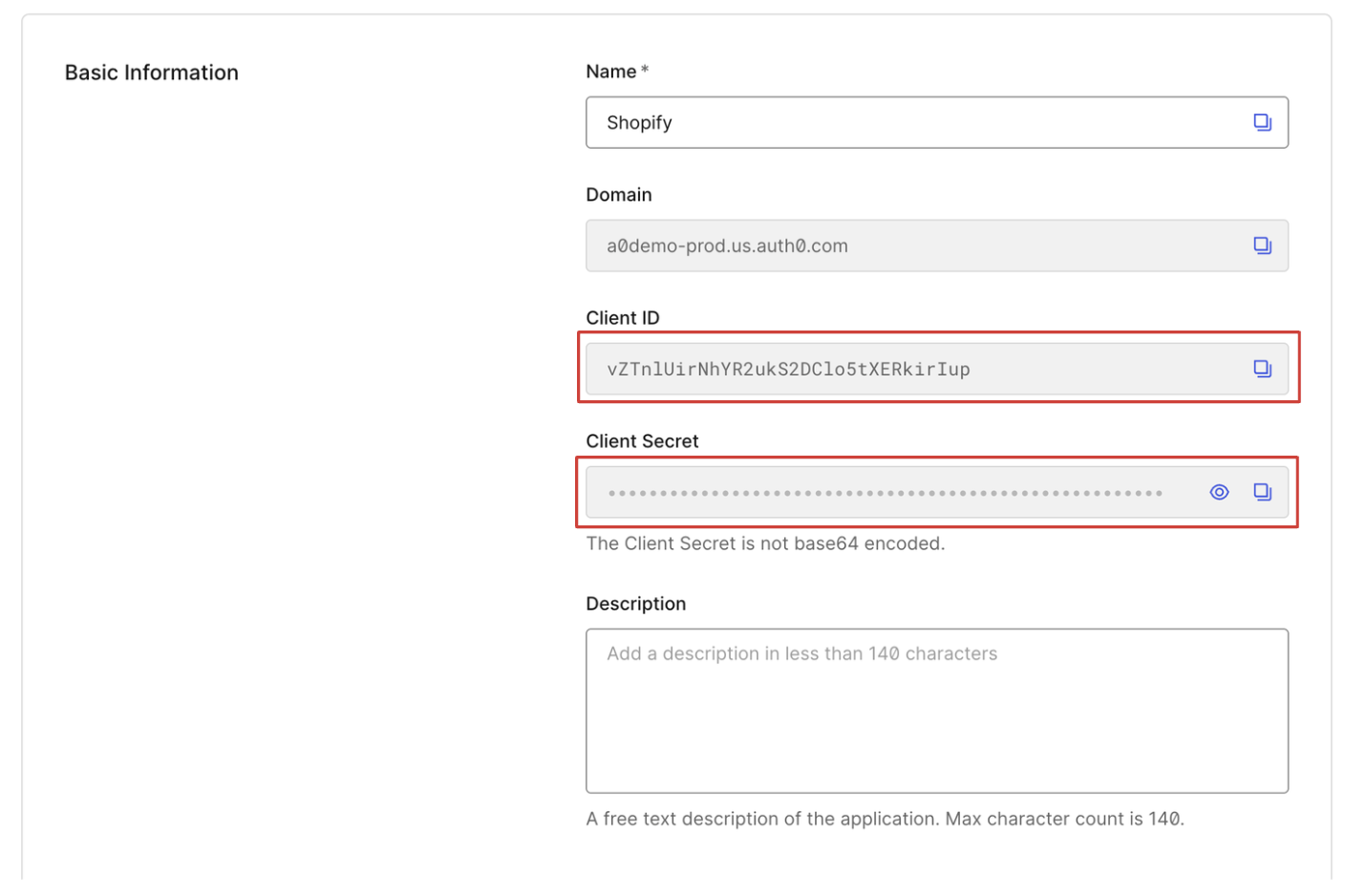
Paste your CLIENT ID and CLIENT SECRET:
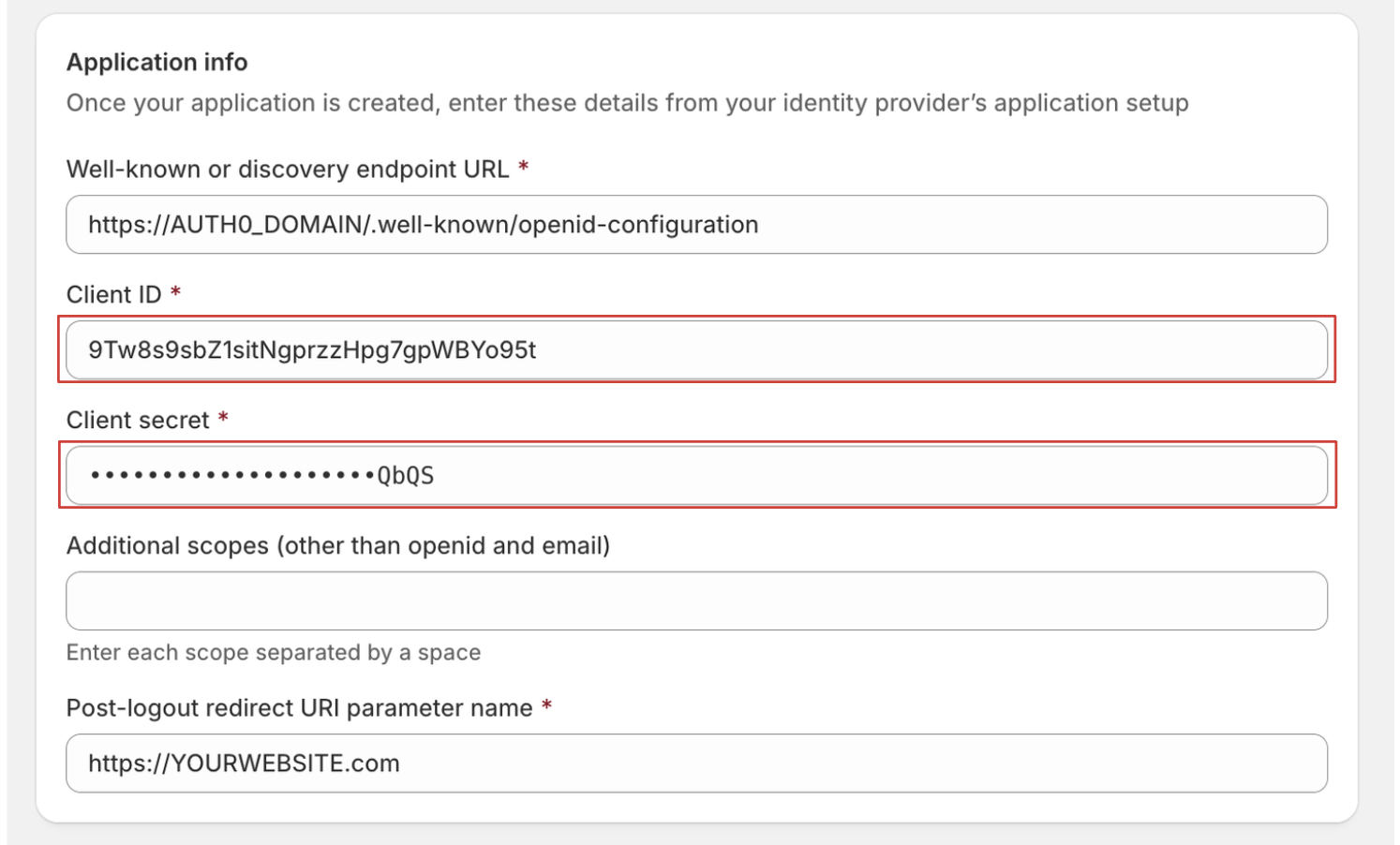
Next, add Post-logout URI:
Which will be your website or your Shopify Store URL.
https://<your-store>.myshopify.com
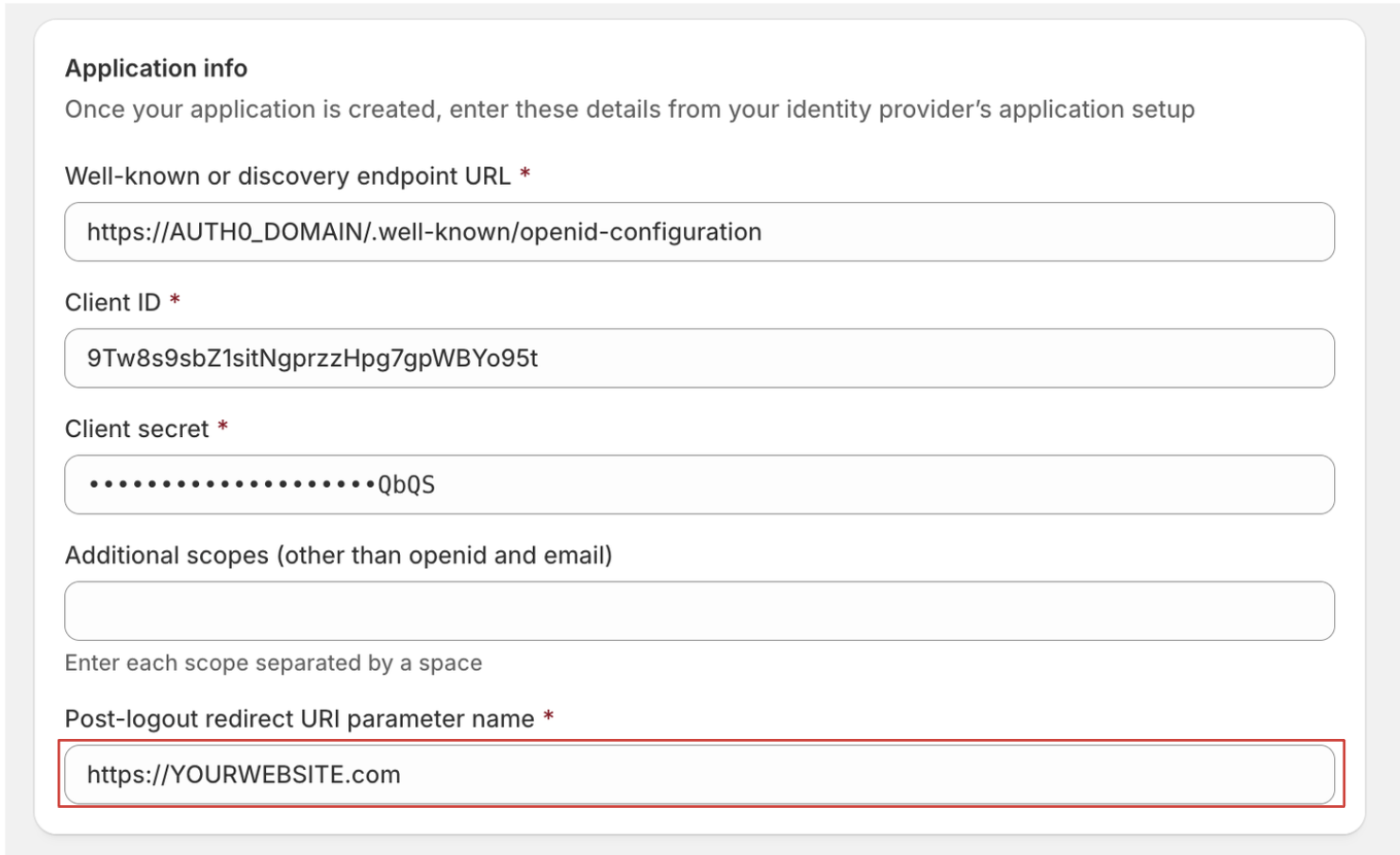
Click Save.
Step 4: Test and activate the connection
- Use the Test connection button in Shopify to ensure everything works
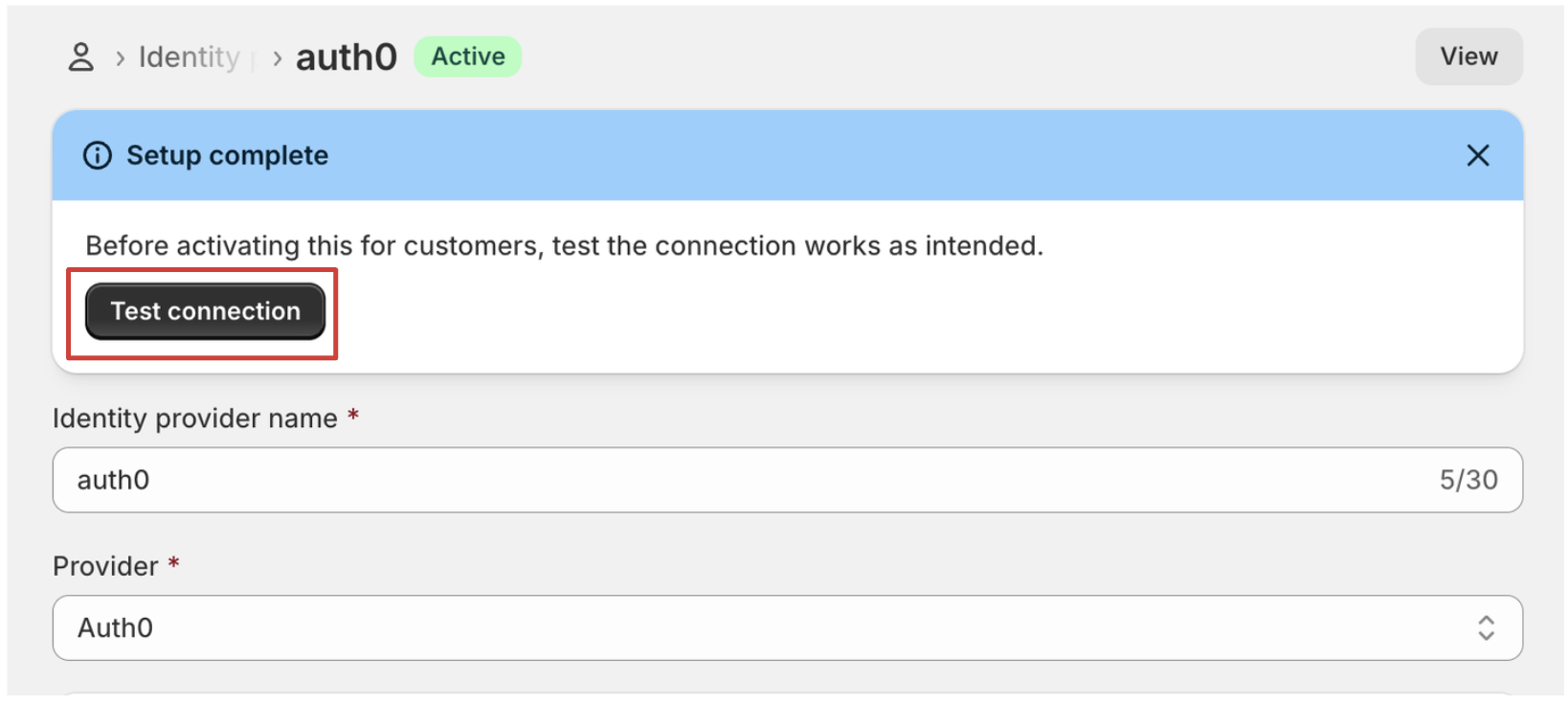
You should now see your Auth0 login:
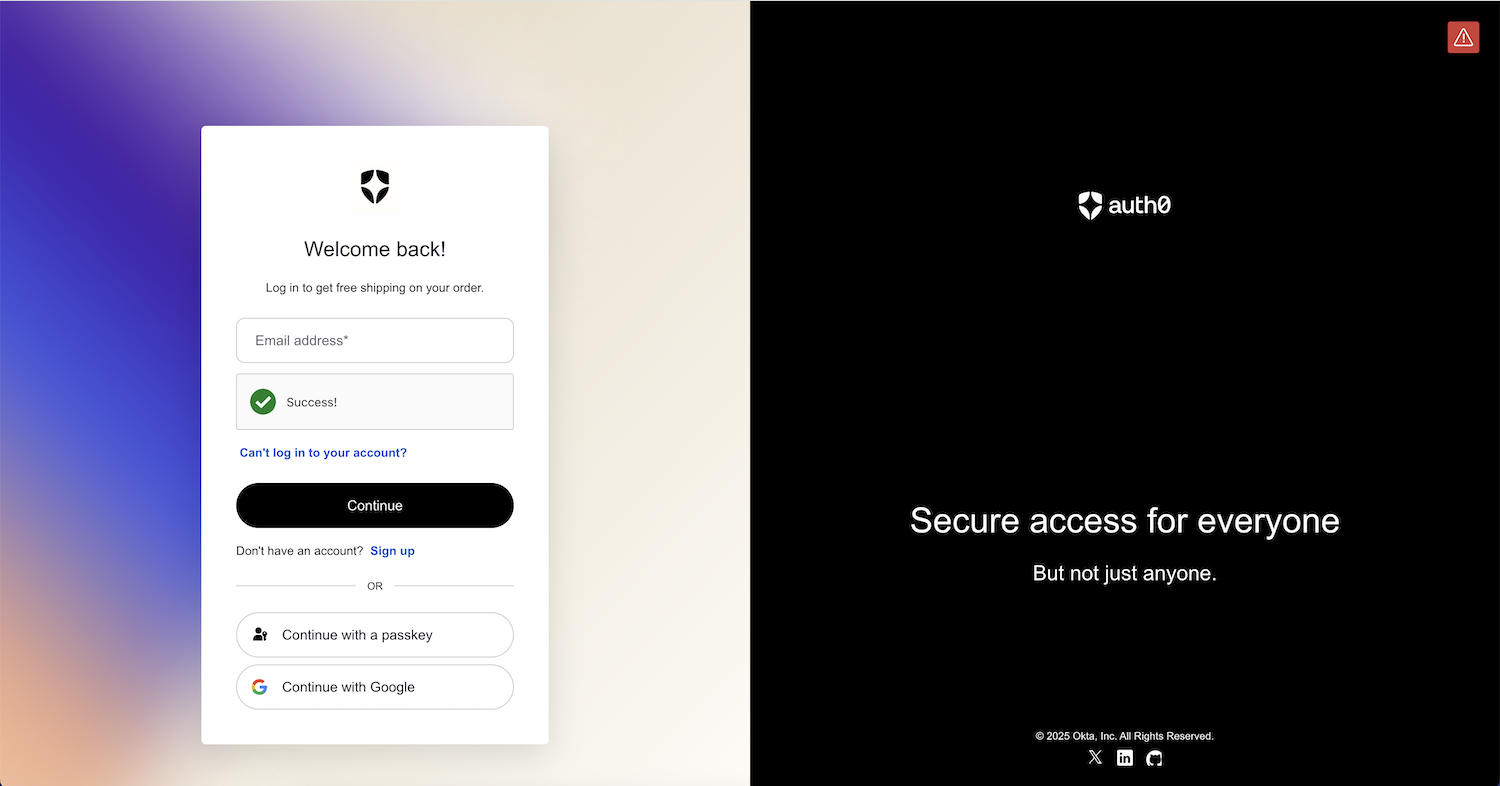
Common issues:
- Callback/Logout URL mismatches
- Incorrect client ID, secret or well-known endpoint
Summary
Shopify's support for OpenID Connect is a game changer for merchants looking to deliver a seamless, secure, and fully branded login experience. By integrating Auth0, you can go far beyond the limitations of traditional Shopify accounts—unlocking support for social logins, multi-factor authentication, custom extensibility via Actions, and unified user identities across your tech stack.
Whether you're aiming to improve customer retention, reduce fraud, or simply create a smoother onboarding experience, connecting Auth0 to Shopify sets a solid foundation.
In this post, we walked through:
- Enabling Auth0 as an Identity Provider in Shopify
- Setting up an Auth0 application with proper callbacks and logout URLs
- Linking your Auth0 tenant to Shopify using OIDC
- Testing and troubleshooting the integration
This is just the beginning. In future posts I will explore how to customize the login and signup experience, and leverage Auth0 Actions to build powerful workflows during authentication.
If you’re ready to give your customers a modern login experience—backed by security and flexibility—Auth0 and Shopify are now better together.
About the author

Stanley Varner
Senior Solutions Engineer
I’m a Senior Solutions Engineer at Okta, partnering with organizations to design and implement secure identity and access management solutions that deliver seamless user experiences. Having launched and managed my own e‑commerce sites and helped build a SaaS fitness‑coaching platform, I’ve learned to anticipate real‑world business challenges and architect IAM solutions that scale.
When I’m not geeking out on OAuth flows, you’ll find me spending time with my family, working out, or experimenting with my next side project.
